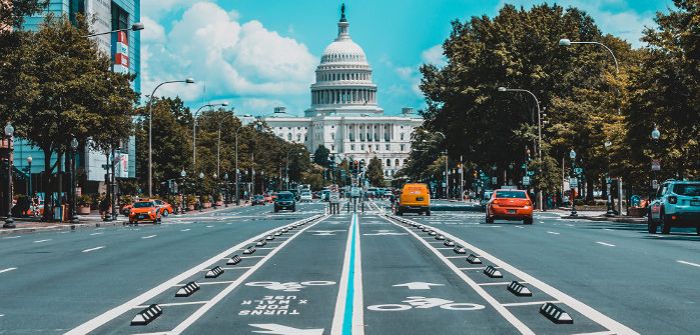In his latest blog, Robert Poole, director of transportation policy at the independent think-tank the Reason Foundation, questions the possibility of an infrastructure bill not materializing.
President Trump’s walkout from the White House meeting with Senator Schumer (D, NY) and House Speaker Rep. Nancy Pelosi (D, CA) has led a number of observers to conclude that a 2019 infrastructure bill – let alone a US$2 trillion one – is not going to happen. That was the initial reaction of House Transportation & Infrastructure Committee Chair Peter DeFazio (D, OR), who announced that he and his colleagues will focus their attention on reauthorizing the surface transportation program, which expires on September 30, 2020.
A US$2 trillion (over 10 years) bill was always something of a pipedream, in part because of the huge price tag. The only two ways to pay for it would be (1) some kind of massive tax increases, or (2) increasing the national debt by another US$2 trillion, at a time when the federal budget is already on a fast track to insolvency.
For the tax increases alternative, Jeff Davis of Eno Transportation Weekly (week of May 6th) ran some numbers for raising US$2 trillion over 10 years, as follows:
- Increasing federal gasoline and diesel taxes: increase each by US$1.50 per gallon immediately.
- Tax only the rich: increase the two top rates, respectively, from 35% to 51% and from 37% to 53%.
- Eliminate all itemized deductions: would raise only US$1.3 trillion over 10 years.
- Increase everyone’s income taxes: a 2.2% increase in every tax bracket would do this.
That’s a lot more specificity than I’ve seen in any of the various infrastructure proposals offered by presidential candidates or various congressional groups. But I don’t see any of those as realistic possibilities.
 Another reason why a major infrastructure bill is questionable is one of timing. Many advocates of such a bill keep citing the need to create jobs, as if this were the Great Depression or the Great Recession. But the United States is at full employment these days, and the kinds of companies that build or rebuild infrastructure are having trouble finding qualified people. Pumping hundreds of billions of dollars into a full-employment economy is unlikely to expand employment, but would likely increase wages significantly, thereby increasing the cost of infrastructure projects and creating shortages of workers in many other industries.
Another reason why a major infrastructure bill is questionable is one of timing. Many advocates of such a bill keep citing the need to create jobs, as if this were the Great Depression or the Great Recession. But the United States is at full employment these days, and the kinds of companies that build or rebuild infrastructure are having trouble finding qualified people. Pumping hundreds of billions of dollars into a full-employment economy is unlikely to expand employment, but would likely increase wages significantly, thereby increasing the cost of infrastructure projects and creating shortages of workers in many other industries.
There is also a federalism case involved here. Nearly all the infrastructure we are talking about – roads and bridges, seaports, electric power, water and wastewater systems, etc. – is owned and operated by state and local governments or the private sector. Historically, those owners have had the responsibility to build, operate, maintain, and improve/modernize those important facilities. The relatively poor condition of much of this infrastructure is a failure of stewardship by those owners. Large-scale windfall funding from Uncle Sam would, in effect, reward those stewardship failures.
If there is no overall infrastructure bill, Congress could still help out, but in ways that do not require major new federal expenditures. Regulatory reform, better financing tools, and incentives for greater use of long-term P3 concessions would all be constructive measures enabling state and local infrastructure owners to deliver more bang for the buck, and improve their stewardship of these assets. For example:
- Expanding tax-exempt private-activity bonds (PABs) to include brownfield reconstruction rather than just new (greenfield) transportation projects would greatly expand the scope for long-term P3 concessions to “rebuild crumbling infrastructure.”
- Federal incentives for infrastructure asset recycling (as used successfully in Australia) would leverage federal dollars significantly, leading to rebuilding aging assets as long-term P3s while freeing up state/local funds for new infrastructure.
- Adding taxpayer safeguards to the RRIF loan program (such as those in TIFIA requiring investment-grade ratings and limiting such loans to 33% of the project cost) would make that program more viable and less risky to taxpayers.
- Allowing states to use toll financing to rebuild and modernize aging Interstate highways and bridges would accelerate the needed reconstruction of these vital corridors – but that permission must be conditioned on provisions that ensure the tolling is customer-friendly.
These are just a few examples. Last year’s White House infrastructure plan included quite a few other policy changes that could pay big dividends. Many of these could be included in the upcoming surface transportation reauthorization, and others in mode-specific bills (seaports, waterways, water and wastewater).
Author: Robert Poole
Subscribe to the Reason Foundation email newsletter and read back issues here.





